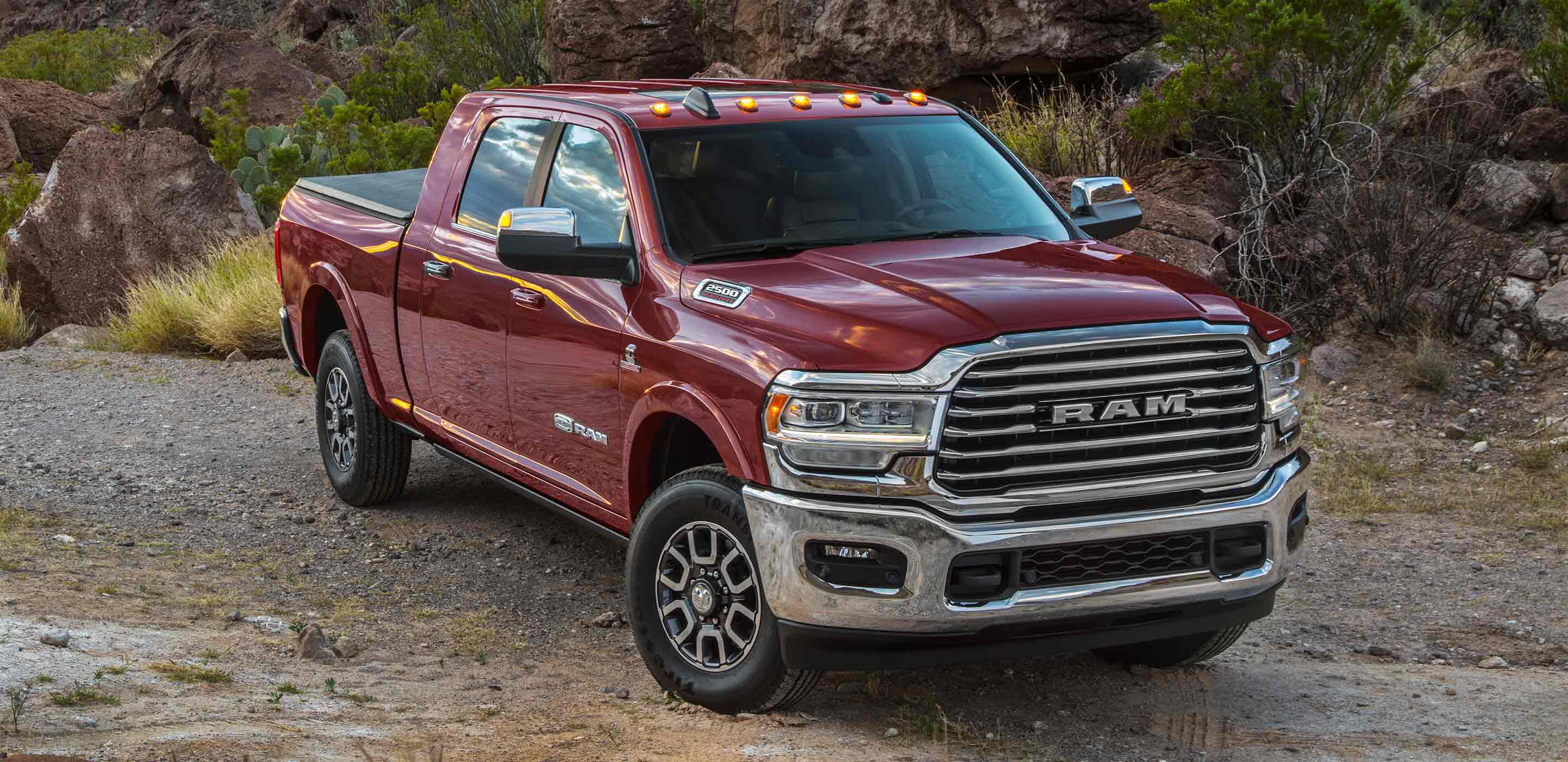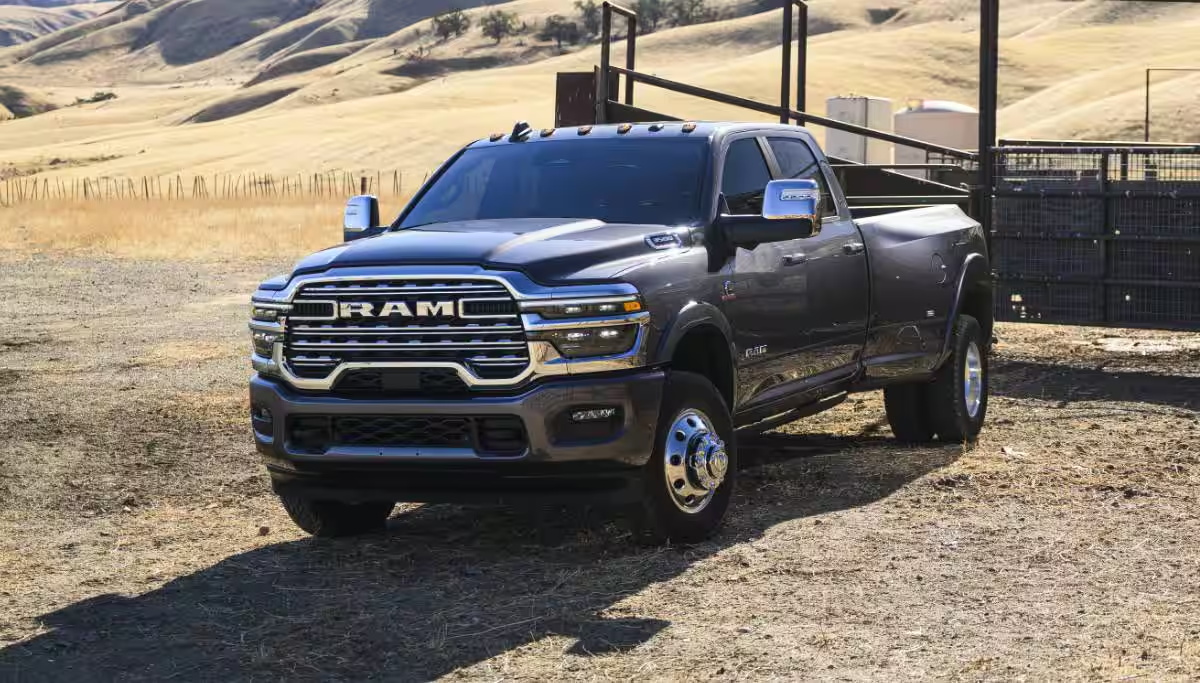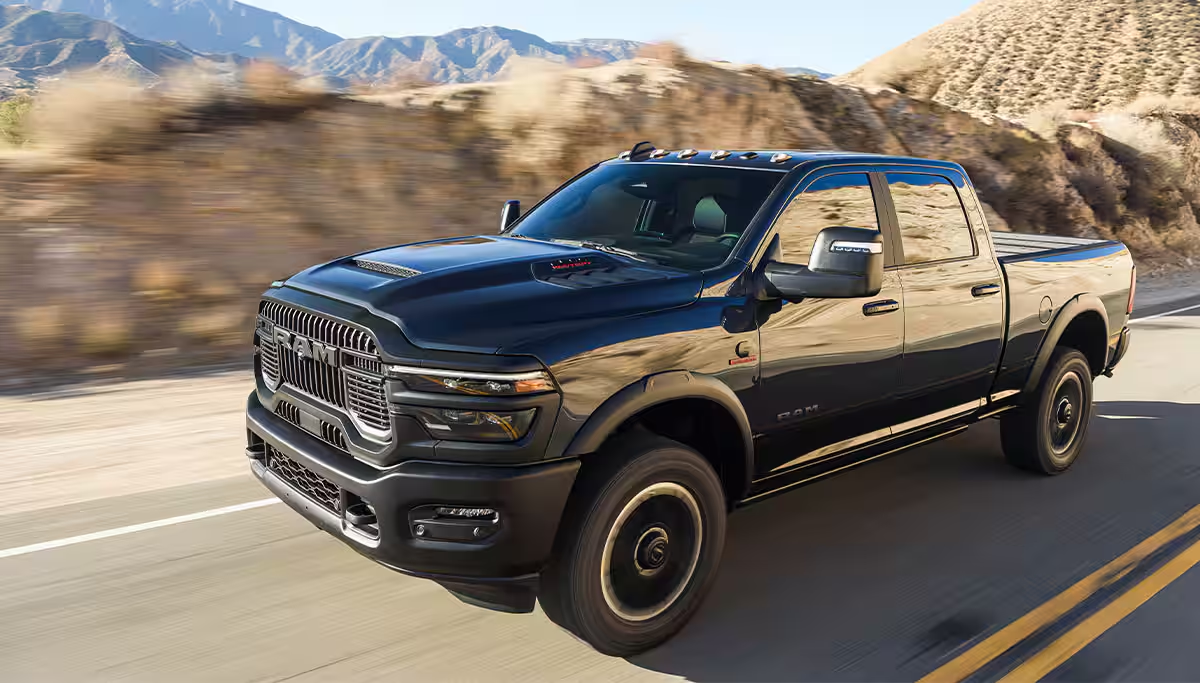When it comes to building a hard-working, reliable commercial fleet, few names carry the same weight as RAM Trucks. Known for their durability, towing prowess, and refined interiors, RAM’s heavy-duty offerings—specifically the RAM 2500 and RAM 3500—are top contenders for businesses that rely on their vehicles day in and day out. But how do you know which model is the better fit for your operation?
At Kunes Commercial, we’ve worked with countless business owners, contractors, and fleet managers who face this very decision. To make it easier for you, we’ve broken down the key differences, similarities, and practical considerations between the RAM 2500 and RAM 3500. Whether you're hauling equipment, towing trailers, or simply need dependable performance, this guide will help you choose the right truck for your fleet.

Powertrain and Performance
Both the RAM 2500 and RAM 3500 offer robust engine options, designed to deliver the power and torque required in commercial settings. Here’s a quick look at the available engines:
RAM 2500 Engine Options:
6.4L HEMI® V8 Gas Engine
- 410 horsepower, 429 lb-ft of torque
- Paired with an 8-speed automatic transmission
6.7L Cummins® Turbo Diesel I6
- 370 horsepower, 850 lb-ft of torque
- Paired with a 6-speed automatic transmission

RAM 3500 Engine Options:
6.4L HEMI® V8 Gas Engine (same as RAM 2500)
6.7L Cummins® Turbo Diesel I6 (same base diesel option as RAM 2500)
High-Output 6.7L Cummins® Turbo Diesel I6
- 420 horsepower, 1,075 lb-ft of torque
- Paired with a heavy-duty Aisin 6-speed automatic transmission
Takeaway:
If your jobs demand serious towing and hauling, the RAM 3500’s High-Output Cummins option is a game changer. That massive torque boost makes it ideal for moving heavy trailers or equipment regularly. On the other hand, the RAM 2500 still packs a punch and is more than capable for light-to-moderate commercial workloads.

Towing and Payload Capacity
These numbers are crucial when comparing work trucks. Here’s how the two stack up:
RAM 2500:
- Max Towing: Up to 19,990 lbs (with diesel engine and proper configuration)
- Max Payload: Up to 4,000 lbs
RAM 3500:
- Max Towing: Up to 37,090 lbs (with High-Output Cummins and gooseneck hitch)
- Max Payload: Up to 7,680 lbs
Takeaway:
The RAM 3500 clearly dominates in raw capability. If your fleet operations involve frequent heavy-duty towing—like transporting machinery, trailers, or heavy materials—this model offers the muscle you need. However, if your payloads and trailers fall under the 20,000-pound range, the RAM 2500 provides sufficient power with improved ride comfort.
Chassis and Suspension Differences
The RAM 2500 and 3500 share a similar platform, but there are key structural differences:
- RAM 2500 uses a five-link coil rear suspension or optional air suspension, which enhances ride quality, especially when unladen.
- RAM 3500 features a traditional leaf-spring rear suspension. This setup is better for managing maximum payload and towing, but results in a stiffer ride.
Takeaway:
If driver comfort is a major concern—especially for work crews spending long hours on the road—the RAM 2500 offers a smoother driving experience. The RAM 3500, while more rugged, is less forgiving on uneven surfaces.
Upfit Compatibility
Whether you're adding a flatbed, utility body, dump kit, or snow plow, both the RAM 2500 and 3500 are upfit-friendly. RAM’s Chassis Cab options, available in the RAM 3500 lineup, open even more possibilities for customization.
- RAM 2500: More limited in upfit variations, but still offers essential commercial upfits.
- RAM 3500: Available in Chassis Cab form, making it ideal for specialized builds like box trucks, tow trucks, or contractor beds.
Takeaway:
If your fleet relies on specific upfits, especially heavy-duty or specialized ones, the RAM 3500 Chassis Cab is the better long-term investment.
Fuel Economy & Cost of Ownership
Heavy-duty trucks aren't exactly known for stellar fuel economy, but operational costs still matter in fleet management.
- The gas-powered HEMI engines in both models offer slightly lower upfront costs and are easier/cheaper to maintain.
- The diesel engines—especially the High-Output Cummins—cost more initially and may have higher maintenance costs but offer better towing efficiency and longevity.
Takeaway:
For fleets prioritizing upfront costs and shorter-term ownership, gas-powered RAM 2500s may offer the best value. For long-haul or heavy-use fleets, diesel-powered RAM 3500s often pay off over time with better fuel efficiency under load and stronger resale value.
Interior and Tech
Even work trucks deserve a little comfort. Both RAM 2500 and 3500 offer a range of trims—from the no-nonsense Tradesman to the refined Laramie and Limited trims.
Features include:
- Uconnect® infotainment with touchscreen options up to 12 inches
- Apple CarPlay® and Android Auto™
- Advanced driver-assist features (adaptive cruise control, blind spot monitoring, etc.)
- Durable work-grade vinyl seats or available leather upholstery
Takeaway:
Both trucks offer the same high-end interior options. Your decision here comes down to trim level and budget—not necessarily the model. If you want a workhorse with creature comforts, either RAM has you covered.
Price and Value
Here’s where numbers meet practicality. The RAM 2500 is typically $5,000–$10,000 less than a similarly equipped RAM 3500. But the RAM 3500’s increased capacities, especially in the diesel and Chassis Cab configurations, can deliver significant ROI depending on your workload.
Takeaway:
The RAM 2500 is often the more economical choice for general contractors, landscaping crews, and service fleets that don’t require top-tier towing or payload. The RAM 3500 shines in construction, agricultural, and towing-heavy operations where maximum strength is essential.
Which Truck is Right for Your Fleet?
Choosing between the RAM 2500 and RAM 3500 ultimately comes down to the specific needs of your business. For light-to-moderate towing jobs—typically under 20,000 pounds—the RAM 2500 offers plenty of capability without the extra cost or weight of the 3500. If your work requires maximum towing capacity and payload, however, the RAM 3500 is the clear choice, especially when paired with the High-Output Cummins diesel engine. Businesses that frequently upfit their vehicles, such as with flatbeds or utility bodies, will benefit from the RAM 3500’s Chassis Cab options. On the other hand, if driver comfort is a top priority—particularly for crews spending long hours on the road—the RAM 2500’s coil-spring or air suspension provides a noticeably smoother ride. For budget-conscious fleets, a gas-powered RAM 2500 delivers strong performance with lower upfront and maintenance costs. Meanwhile, operations focused on long-haul driving or heavy-duty diesel work will get the most value from the RAM 3500 equipped with the High-Output Cummins engine.
Conclusion
Both the RAM 2500 and RAM 3500 are work-ready heavy-duty trucks with serious commercial appeal. The right choice depends on your business’s specific needs—payload, towing, comfort, and budget all play a role. At Kunes Commercial, we’re here to help you build a fleet that works as hard as you do.
Need help spec’ing out your ideal fleet vehicles? Our experienced team at Kunes Commercial offers tailored solutions for businesses of every size. Stop by one of our locations or contact us today to test drive the RAM 2500 and 3500 and see which one suits your needs best.

